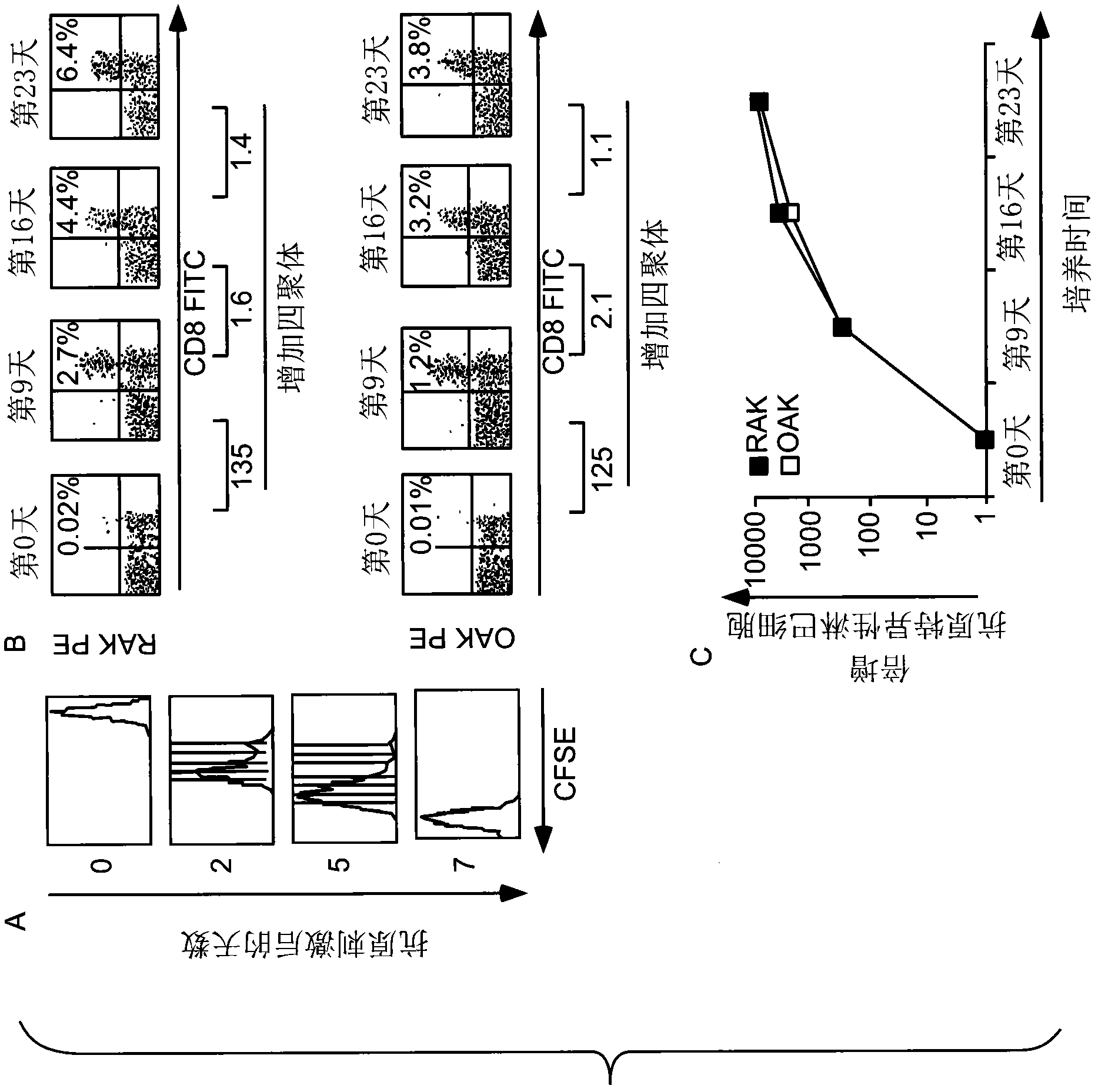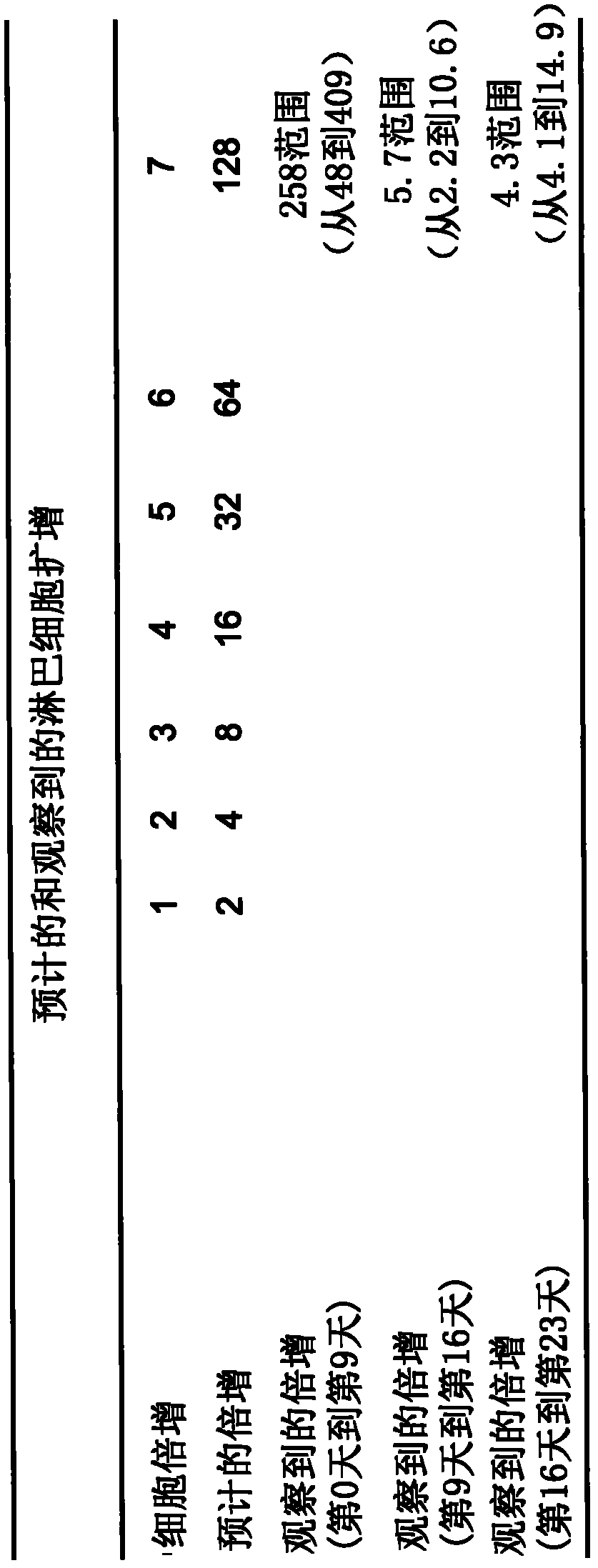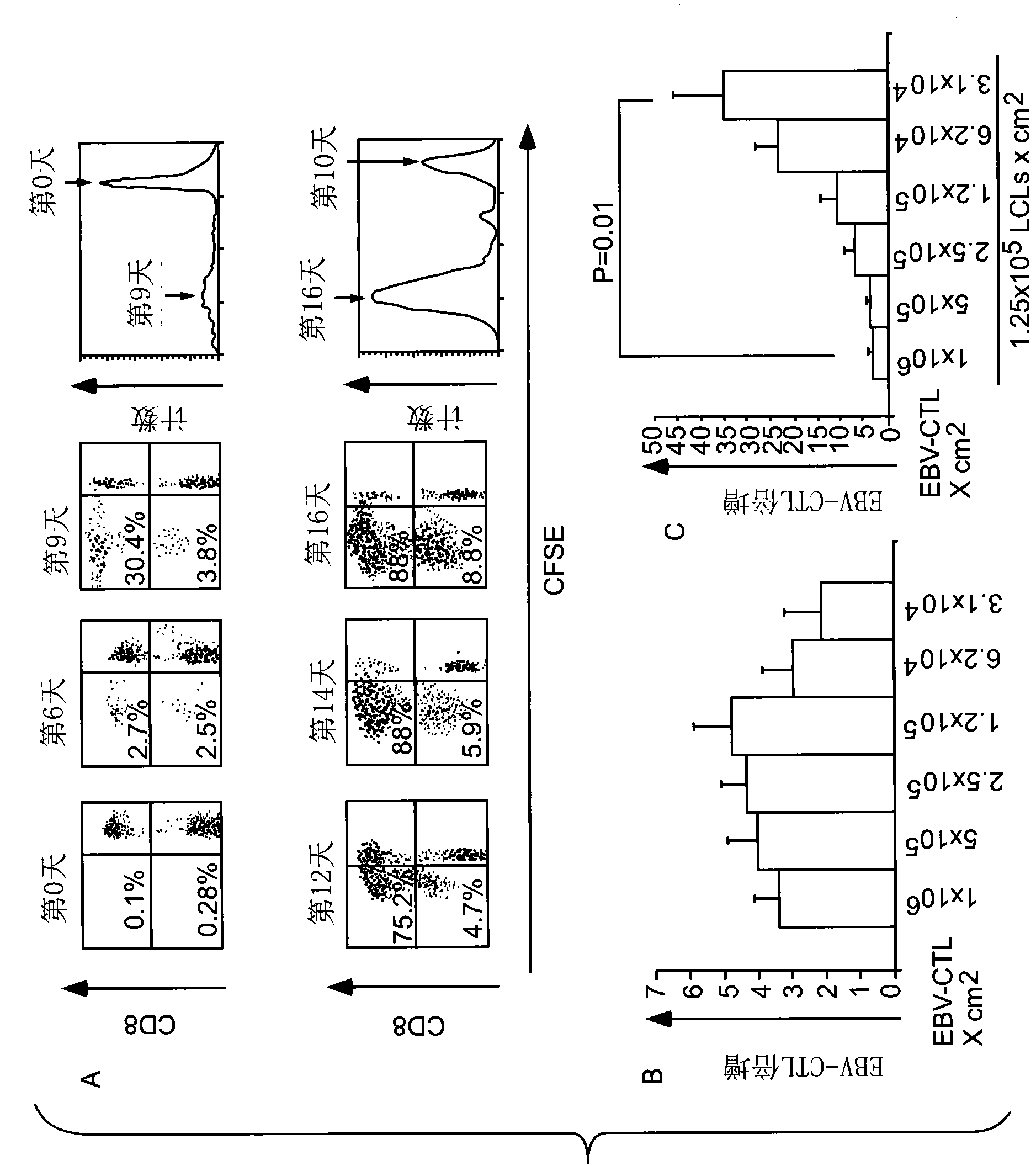Improved methods of cell culture for adoptive cell therapy
A technology of cells and culture medium, applied in the field of cultured cells
- Summary
- Abstract
- Description
- Claims
- Application Information
AI Technical Summary
Problems solved by technology
Method used
Image
Examples
Embodiment 1
[0057] Example 1: Demonstration of limitations of conventional methods.
[0058] The data of this example demonstrates that when using a media volume of 2 ml per well (i.e., a media height of 1.0 cm and a ratio of media volume to surface area of 1 ml / cm 2 ) standard 24-well tissue culture plate (that is, each well has a surface area of 2 cm 2 ) Limiting factors in conventional culture methods for preparing EBV-CTL.
[0059] Stage 1 of culture, day 0:
[0060] By using antigen-presented γ-ray irradiated (40Gy) autologous EBV-LCL at a PBMC:LCL ratio of 40:1 and 1ml / cm 2 The ratio of medium volume to growth surface cell composition of PBMC from normal donors (approximately 1×10 6 cells / ml) were cultured to start the expansion of the EBV-CTL population, thus supplemented with 45% Click medium (Irvine Scientific, Santa Ana, CA), 2mM GlutaMAX-I, and 10% FBS (fetal bovine serum). RPMI 1640 medium to establish approximately 1 x 10 6 cells / cm 2 surface density of the ...
Embodiment 2
[0082] Example 2: At any given stage or at the beginning of each stage of culture, a reduction in the amount of time required to increase a target cell population can be achieved by reducing the cell surface density of the target cell population.
[0083] We hypothesized that the reduced expansion rate of the target cell population after the second T cell stimulation compared to the first stimulation is due to restrictive cell culture conditions leading to activation-induced cell death (AICD). For example, refer to image 3 A, At the first stimulation, the EBV antigen-specific T cell component of PBMCs corresponds to at most 2% of the cell population, so the seeding density of antigen-specific responsive T cells is less than 2 × 10 4 / cm 2 , the remaining PBMC act as non-proliferative feeder cells (eg image 3 CFSE-positive cells in A), these feeder cells maintain optimal cell-cell contacts to enable proliferation of antigen-specific CTLs. In contrast, at the second stimu...
Embodiment 3
[0087] Example 3: Minimum Surface Density of Cell Populations Comprising Target Cells and / or Antigen Presenting Cells can allow growth of target cell populations seeded at very low surface densities.
[0088] Figure 4 shows when continuing image 3 The work shown in is an example of the results we obtained, which further demonstrates that when the target cell needs the support of other cells, as long as the target cell is provided with sufficient feeder cells and / or antigen presenting cells, unconventional low Target cell surface density can initiate population expansion. In these experiments, we went on to demonstrate that at an R:S ratio of 8 to 1 approximately 1.0×10 6 Target cells / cm 2 Compared to only about 3900 target cells / cm at an R:S ratio of 1:32 2 We stopped testing at how well the total cell composition of the target cells greatly expanded beyond 50-fold the starting surface density.
PUM
| Property | Measurement | Unit |
|---|---|---|
| Inoculation density | aaaaa | aaaaa |
| Surface density | aaaaa | aaaaa |
Abstract
Description
Claims
Application Information
 Login to view more
Login to view more - R&D Engineer
- R&D Manager
- IP Professional
- Industry Leading Data Capabilities
- Powerful AI technology
- Patent DNA Extraction
Browse by: Latest US Patents, China's latest patents, Technical Efficacy Thesaurus, Application Domain, Technology Topic.
© 2024 PatSnap. All rights reserved.Legal|Privacy policy|Modern Slavery Act Transparency Statement|Sitemap



